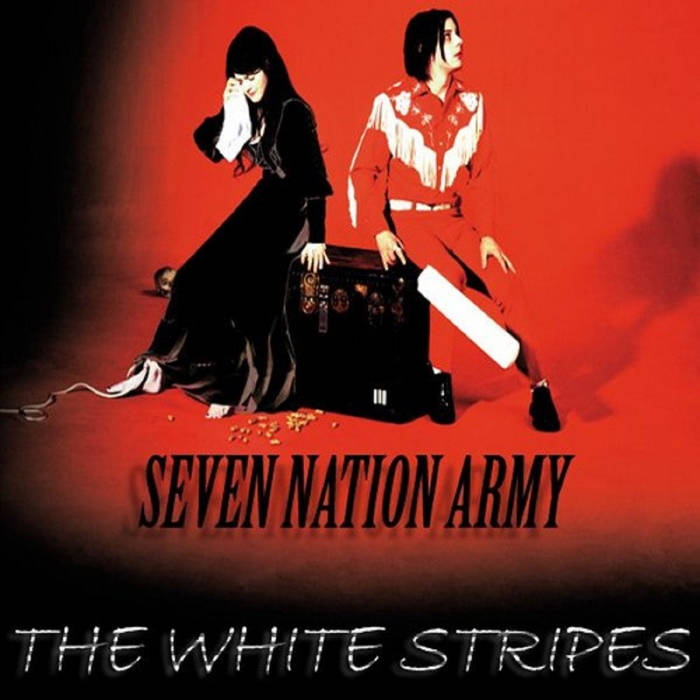 When Amy Winehouse released “Back to Black” in 2006, it didn’t just mark the arrival of a modern classic—it cemented her as one of the most distinctive voices of the 21st century. With its aching vulnerability, vintage soul production, and stark honesty, the track became the centerpiece of an album that resonated with millions. But “Back to Black” wasn’t just a hit; it was an emotional exorcism wrapped in retro glamour and noir heartbreak. Winehouse, armed with a beehive and a broken heart, channeled the depths of personal despair into a song that felt both timeless and entirely her own.
When Amy Winehouse released “Back to Black” in 2006, it didn’t just mark the arrival of a modern classic—it cemented her as one of the most distinctive voices of the 21st century. With its aching vulnerability, vintage soul production, and stark honesty, the track became the centerpiece of an album that resonated with millions. But “Back to Black” wasn’t just a hit; it was an emotional exorcism wrapped in retro glamour and noir heartbreak. Winehouse, armed with a beehive and a broken heart, channeled the depths of personal despair into a song that felt both timeless and entirely her own.
From its opening piano chords to the swelling orchestration and Winehouse’s smoky vocal delivery, “Back to Black” harkens back to the sounds of the 1960s girl groups, the deep soul of Motown, and the tragedy-laced croonings of torch singers like Billie Holiday and Dinah Washington. Yet, it is no imitation. Producer Mark Ronson, in collaboration with the Dap-Kings as the backing band, helped modernize the classic soul palette with an edge that matched Winehouse’s contemporary lyricism. The result was a track that sounded like it could have been played on a jukebox in 1965—or at a festival in 2006—and still feel immediate, necessary, and devastating.
At its core, “Back to Black” is about the end of a destructive love affair. Amy Winehouse was in a turbulent relationship with Blake Fielder-Civil, a man who not only inspired much of her music but would later become her husband and a pivotal (and controversial) figure in her life story. Fielder-Civil reportedly left Winehouse to return to an ex-girlfriend, and it was this emotional rupture that spawned the lyrics to “Back to Black.” But rather than write a typical breakup song, Winehouse dug deeper. “We only said goodbye with words / I died a hundred times,” she sings, revealing a pain that’s almost performative in its repetition, like an actress in a tragic role she cannot escape.
The genius of “Back to Black” lies in its tension between the classic and the raw. Winehouse’s lyrics are laced with colloquialisms, unexpected phrasing, and modern candor, yet they glide seamlessly over a bed of swelling strings, echoing drums, and ghostly harmonies. The phrase “I go back to black” is a metaphor for her return to depression, self-destruction, or possibly substance use—left ambiguous enough to allow interpretation but stark enough to cut deep. It’s not just a color; it’s an emotional state. She’s not merely sad—she’s returned to the abyss.
The production complements the emotional honesty. The dusty, analog sound, recorded in Brooklyn using vintage equipment, allows the listener to hear every creak of the rhythm, every breath of the horns, every sigh in Winehouse’s voice. It feels lived-in and haunted. Mark Ronson wasn’t just trying to evoke a retro feel—he was resurrecting an entire era, and Winehouse’s voice carried it with authority. Her phrasing, her timing, and her vibrato all suggest a singer out of time, as if she were plucked from another generation and given a pen soaked in 21st-century angst.
“Back to Black” became the defining song of her career. It didn’t chart as high in the United States initially as one might expect (peaking at number 56 on the Billboard Hot 100), but its cultural impact was seismic. In the UK, it was a massive hit, and over time, as Amy’s legend grew, so did the status of the song. It was streamed, covered, played at memorials, sampled, and revered. Beyoncé and André 3000 even recorded a controversial cover for the “Great Gatsby” soundtrack, which sparked renewed debates about authenticity, vocal delivery, and what made Amy’s version so special. The answer, simply, is that hers could never be replicated—because “Back to Black” was more than a song to her; it was a scar, a memory, a cry for help wrapped in melody.
Amy Winehouse was always walking a fine line between performance and autobiography. Her work was confessional but not self-pitying, poetic but unpretentious. “Back to Black” exemplifies this duality. There is structure, sure, but there’s also a wildness, a sense that at any moment the emotion could overwhelm her. This is especially evident in her live performances of the track. Watching Amy sing “Back to Black” onstage, you often feel as though you’re intruding on something deeply personal. Her eyes wander, her body sways, and her voice sometimes cracks, not from technical weakness but from the sheer weight of feeling.
Lyrically, the song is compact but loaded. “He kept his dick wet with his same old safe bet” is perhaps the most jarring line in the song, so brash in its delivery that it nearly ruptures the illusion of vintage elegance. And yet, this line is precisely why the song works—it refuses to be polite. It’s the collision of old and new, of stylized pain and real vulgarity. Amy Winehouse didn’t censor herself, and in doing so, she elevated the truth of her music.
Tragically, Amy’s life mirrored the themes of “Back to Black.” Her struggles with addiction, fame, and mental health became a public spectacle. She died in 2011 at the age of 27, joining the infamous “27 Club” of musicians lost too soon. In the years since her death, “Back to Black” has taken on even more significance. It’s not just a breakup song anymore—it’s a requiem. It’s the sound of someone unraveling in real time, aware of their descent but unable to stop it.
Critics have hailed “Back to Black” as one of the best songs of its decade, and it continues to appear on lists of all-time greats. Its legacy is undeniable. But more than critical acclaim or commercial success, what gives the song its lasting power is its emotional nakedness. There are love songs and there are breakup songs—but “Back to Black” transcends both. It is about grief, about absence, about going backwards when you know you shouldn’t. It’s about the spaces people leave behind when they go, and how we sometimes crawl into those spaces ourselves.
Amy Winehouse was often called an “old soul,” but that label feels inadequate. She was an exposed nerve, a conduit of feeling that few artists can claim to match. “Back to Black” isn’t just her masterpiece; it’s a masterclass in musical storytelling. The way it builds, the way it lingers, the way it refuses to end on a note of redemption—it all feels deliberate and honest. There is no healing at the end of this track, no sudden strength or empowerment. Just a return to the darkness, a surrender.
And that may be why it speaks to so many people. Not everyone gets the fairytale ending. Not everyone comes out of heartbreak stronger. Some people just endure. And “Back to Black” is about that endurance. It’s not triumphant—it’s truthful. And in that truth, it becomes something far more important than a hit single. It becomes a companion for the brokenhearted, a salve for the wounded, and a testament to one woman’s ability to turn pain into art.
Even today, almost two decades later, “Back to Black” still feels fresh. New generations are discovering it—sometimes through viral videos, sometimes through streaming algorithms, sometimes through the biopic “Amy” or tribute albums. And each time, the reaction is the same: awe. That voice, that pain, that orchestration—it’s lightning in a bottle. And while Amy Winehouse is no longer here to perform it, her essence remains encoded in every second of that recording.
So when people talk about “Back to Black” by Amy Winehouse, they’re not just talking about a song. They’re talking about a cultural moment, a stylistic revival, a personal tragedy, and an artistic triumph. They’re talking about the way music can feel like a diary entry written in stereo. They’re talking about how soul never dies—it just changes voices. And in Amy’s voice, soul found one of its fiercest and most unforgettable messengers.
The song may be about going “back to black,” but for the rest of us, it was a journey into something luminous. It was a reminder that even the darkest songs can shine if they tell the truth. And no one told it quite like Amy.


